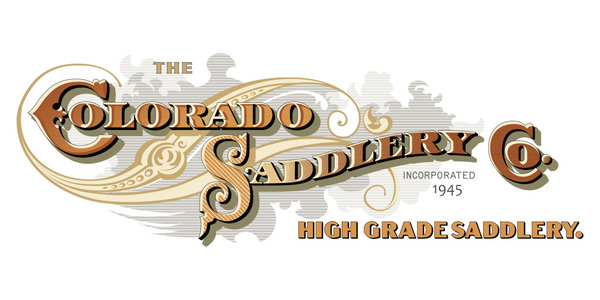GENERAL INFORMATION ON SADDLE TREES
A finished saddle has leather and fleece covering the bars of the tree and this makes it hard to judge how the bars of the tree actually fit a horse’s or mules’s back. The bars of the tree should be resting along the back of the horse or mule with little or no gap, as seen in photos A,B & C. The bars of the tree are sitting on the horse’s back making full contact along their entire length.

When considering the fit a finished saddle you can put the saddle on the horse or mule with a light blanket under it. The horn of the saddle should be directly over or just slightly behind the top of the wither, with the saddle either loosely cinched or uncinched.
- Starting at the front, feel under the gullet. If the tree is too narrow, the top of the bar will be off the shoulder, if too wide, the bottom will be off the shoulder.
- Next feel along the edges of the bar as it runs down the back, making sure the are no gaps where the tree “bridges” or skips over part of the back. These gaps creat pressure points.
- Lastly, feel under the rear of the saddle to make sure the bars are resting comfortably over the loin. What was true for the shoulder also holds true for this area. If the tree is too narrow, the top of the bar will be off of the loin and too wide, the bottom of the bar will be off of the loin. Gullet height is important only if the gullet is too low and hits the top of the wither. We build on trees that have 8” high gullets and this allows us to fit horses with low and high withers. The height of gullet also takes into account that as a horse ages their withers become more pronounced.
When fitting a saddle, take into account the condition of the horse. Is the animal fat or thin? Many feed companies offer charts to help determine a horse or mule’s conditioning. Also, take into account the age of the animal. A younger horse will have a fuller, more round back and as it ages, the wither will become more pronounced and the loin area less. It is important to remember that every horse or mule is unique and just as one size of boots won’t fit every person in the world, one tree won’t fit every horse or mule in the world. At Colorado Saddlery, we have done our best to offer trees that will fit the widest possible variety of horses and mules comfortably.
If you should ever need a tree to check for fit, please call us and we can arrange for a tree to be shipped with a return policy in place.

Many people concentrate solely on tree fit when discussing saddles. One of the most common problems for saddle fit is the rigging position. Rigging position is where the attachment for the cincha or girth is hung off of the saddle. There are three basic types of rigging positions.
When looking at a saddle that has the rigging hung too far forward for a particular horse or mule, the cincha or girth when tightened will be directly behind the front legs or sometimes the latigo strap and cincha will be angled back to get behind the front legs. As the horse or mule moves the cincha will be pushed down the belly and wherever the cincha goes the saddle has to follow. Many times this causes the saddle to ride too far down on the back. When this occurs the bars don’t fit correctly and can lead to back problems.
Colorado Saddlery has found that the 7/8 postion has the best chance of letting the saddle ride correctly when a saddle has a hanging dee or flat plate rigging. We also offer many saddles with 3-way riggings that allow the rider to move the cincha to the proper postion for the specific type of horse or mule, type of riding, or type of country it is being ridden in.
